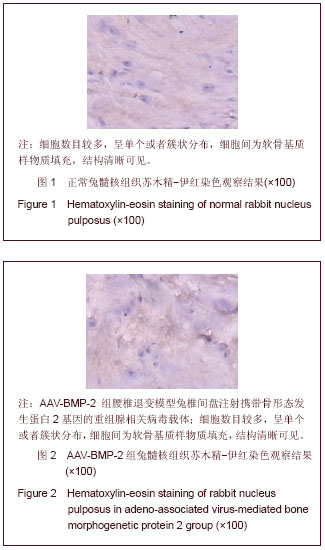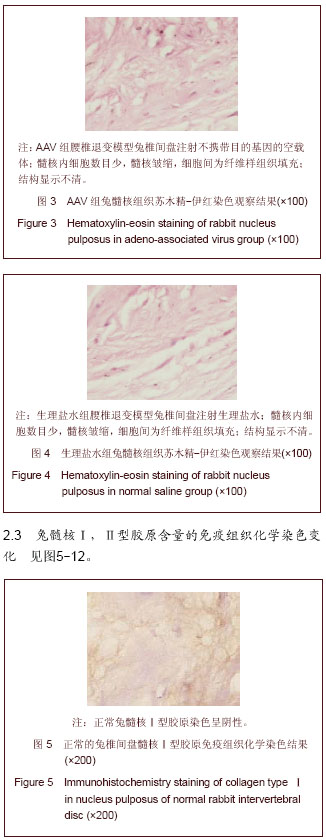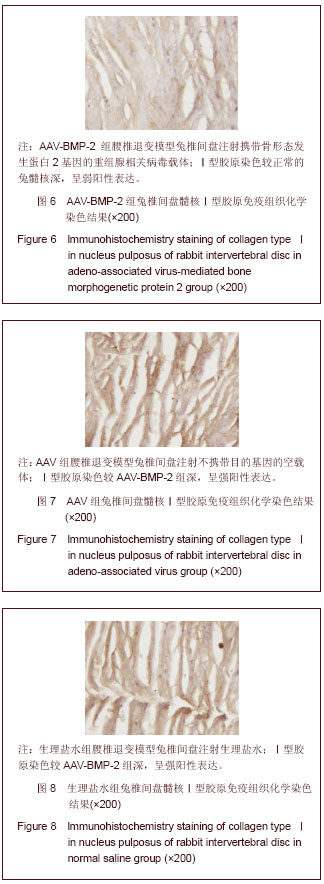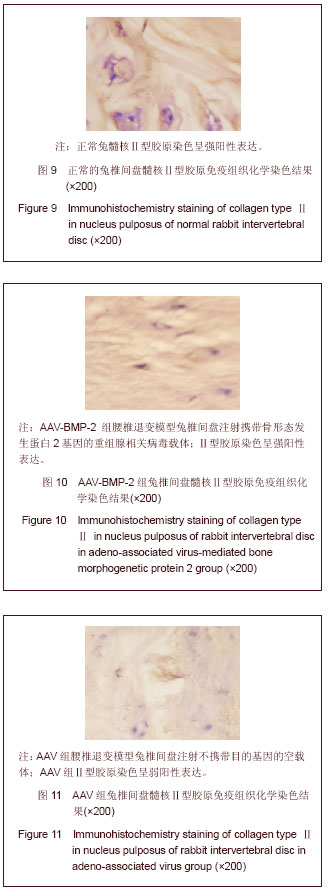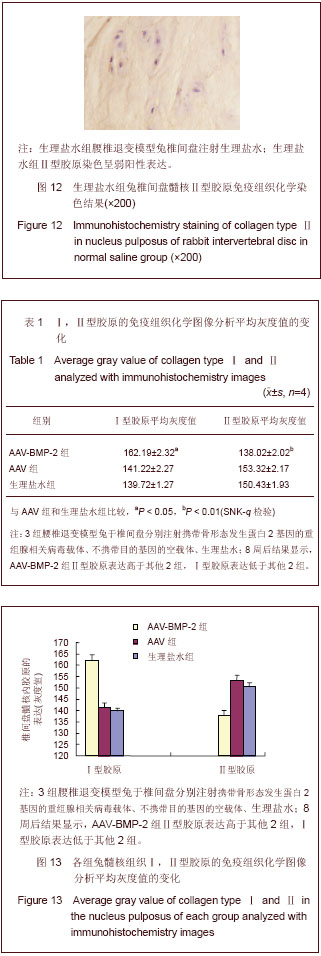| [1] 胡有谷.腰椎间盘突出症[M].3版.北京:人民卫生出版社,2004: 109-155.
[2] Sobajima S, Kompel JF, Kim JS, et al.A slowly progressive and reproducible animal model of intervertebral disc degeneration characterized by MRI, X-ray, and histology. Spine. 2005;30(1):15-24.
[3] Masuda K, Aota Y, Muehleman C,et al. A novel rabbit model of mild, reproducible disc degeneration by an anulus needle puncture: correlation between the degree of disc injury and radiological and histological appearances of disc degeneration. Spine. 2005;30(1):5-14
[4] 林鸿宽,叶君健.纤维环损伤诱导兔椎间盘退变模型[J].解剖学杂志,2008,31(5):699-702.
[5] An HS, Takegami K, Kamada H, et al..Intradiscal administration of osteogenic protein-1 increases intervertebral disc height and proteoglycan content in the nucleus pulposus in normal adolescent rabbits. Spine.2005;30 1):25-31.
[6] Nishida K,Gilbertson LG,Robbins PD,et al.Potential applications of gene therapy to the treatment of intervertebral disc disorders. Clin Orthop Relat Res.2000;(379 supp 1): s234-241.
[7] Horner HA, Urban JP. 2001 Volvo award winner in basic science studies effect of nutrient supply on the viability of cells from the nucleus pulposus of the intervertebral disc.Spine. 2001;26(23);2543-2549.
[8] Levicoff EA, Kim JS, Sobajima S,et al.Safety assessment of intradiscal gene therapy II: effect of dosing and vector choice.Spine. 2008;33(14):1509-1516; discussion 1517.
[9] Chooi M, Yvonne K, Elizabeth P. Adenovirus and adeno-associated virus vectors. DNA and Cell Biology. 2002; 21(12):895-913.
[10] Takae R,Matsunaga S,Origuchi N,et al.Immrnolocalization of bone morphogenetic protein and its receptors in degeneration of intervertebral disc.Spine.1999;24(14): 1397-1401.
[11] Kim DJ,Moon SH,Kim H,et al.Bone morphogenetic protein-2 facilitates expression of chondrogenic, not osteogenic, phenotype of human intervertebral disc cells. Spine.2003;28(24):2679–2684.
[12] Gaetani P,Torre ML,Klinger M,et al.Adipose-derived stem cell therapy for intervertebral disc regeneration: an in vitro reconstructed tissue in alginate capsules.Tissue Eng Part A. 2008;14(8):1415-1423.
[13] Sakai D, Mochida J, Iwashina T, et al. Regenerative effects of transplanting mesenchymal stem cells embedded in atelocollagen to the degenerated intervertebral disc. Biomaterials. 2006;27(3):335-345. |

